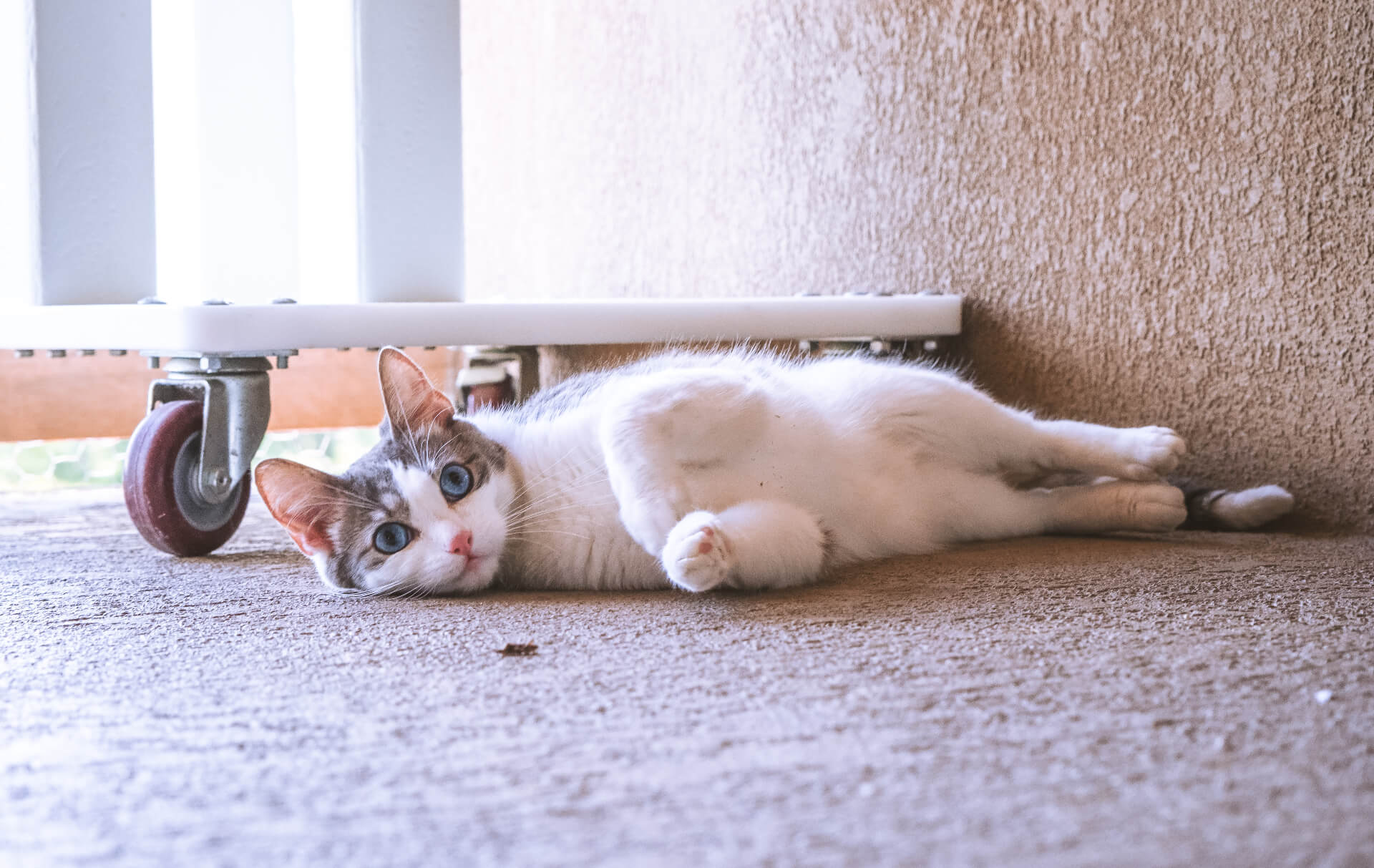
Cat Toys & Indoor Enrichment
Visit any pet store and you will find hundreds of cat toys of different sizes, shapes, and materials. A variety of fuzzy mice, feather wand toys, and balls may entertain most kittens and adolescent cats. However, adult cats and very active cats need a little more to encourage appropriate play habits. Interactive toys are a great way to encourage play, stimulate your cat’s mind and senses, slow down eating, and combat boredom. Creating an enriched indoor environment for your cat can reduce unwanted behaviors such as vocalizing, inappropriate scratching, stalking and play-biting humans, and even conflict between resident cats.
Food Toys
- Kibble balls and puzzle toys – Cat food toys vary in size and may hold a few treats or an entire meal. Cats must manipulate the toy to make the kibble fall out. This appeals to a cat’s desire to hunt for food and provides problem solving mental stimulation. These toys will also slow down a cat’s eating which is better for her digestive system, and can reduce vomiting associated with overeating. Many puzzle toys made for dogs, such as Outward Hound’s slow-feeding bowls and puzzle toys, also work well to feed your cat. There are a variety of food and puzzle toys available for sale at the Humane Society of Western Montana retail store.
- Homemade food toys – Make your own cat food toy by placing kibble in a toilet paper tube and folding the ends. You can cut holes in the side of the tube, or, if your cat is very food motivated or likes to chew, you can leave the tube whole. You can also use any plastic container with a well-fitting lid and a few small holes cut in it, or try a tennis ball with a hole cut into it to make a kibble toy. You can create your own puzzle toys by putting kibble in an ice cube tray or muffin tin with tennis balls placed over the holes. Be sure to supervise your cat with any homemade food toy to ensure she doesn’t chew the plastic or ingest anything other than the food.
Interactive Toys
- Mystery box – This is a good option for cats who are not food motivated or for those who need to limit their calorie intake. These cats can still enjoy interactive play. Take a small packing box or shoe box, cut holes of various sizes in the box, place a few toys, catnip, treats, etc. in the box and seal it back up. Your cat will reach into the holes to find their surprise gifts! After a few days place different types of toys, treats, etc. in the box to reinvigorate your cat’s curiosity. The same can be done with paper bags, and you can link several boxes together to create more complexity.
- Mechanized toys – There are a variety of self-operating laser pointers, fuzzy mice, and other cat toys on the market. These can be great options to provide to your cat when she must be home alone. However, these toys should not replace human interaction with your cat. Playing with you is an important part of bonding and social interaction.
Indoor Enrichment
- Textures and perches – Cool tile and rough wood appeal to cats just as much as fleece beds. Provide variety for your cat with different textures on her perches and sleeping places. Also, keep in mind that cats prefer to live up high. Perches at various heights will increase the amount of indoor territory your cat has and will also provide a safe place to escape from guests, kids, or other pets. If you want your active cat to stay indoors or your indoor/outdoor cat gets bored inside you can enrich your cat’s indoor territory with elements of the outdoors. When a cat goes outside she is stimulated by the different textures (warm concrete, dirt, grass, etc.) as well as novel sights and smells. Mimic these experiences with a piece of firewood for your cat to use as a scratching post, live cat grass or catnip plants, and a perch next to a sunny window.
- Sights and sounds – A bird feeder outside your cat’s favorite window can provide hours of entertainment. If that isn’t practical where you live, there are videos and music designed for cats. Many cats will respond to the stimulation of bird song or the sight of flying birds on the television.
- Plants – Cats often love to chew on plants and dig in the dirt in potted plants. This can be frustrating, messy, and dangerous. Be sure to know the varieties of house plants in your home and avoid any that are toxic to cats. Hanging plants and plant stands can put plants out of your cat’s reach. Providing a cat-safe plant, such as cat grass, in an accessible location can appease your cat’s desire for greens and reduce chewing on your other plants.
- Scratching posts – Every cat needs a scratching post (or two). Scratching is as essential to a cat’s well-being as eating and breathing. Provide your cat with an appropriate outlet for this behavior in the form of cat trees, scratching posts, and/or scratching pads. Pay attention to your cat’s scratching preferences to select the right post for her. For example, does she like to stretch vertically or horizontally while scratching? Does she prefer wood, carpet, cardboard, rope, or a variety of textures? Most cats love the affordable cardboard cat scratchers and you can increase the appeal by sprinkling them with catnip. Find scratching boards at the Humane Society of Western Montana retail store.
